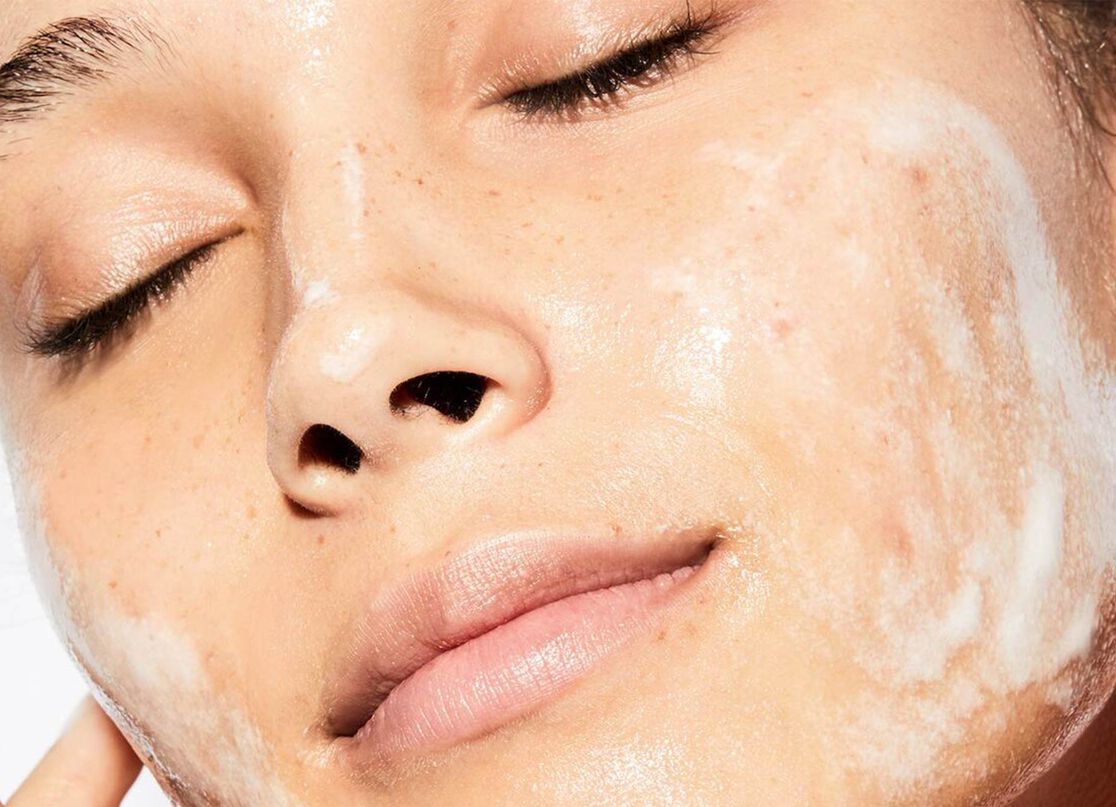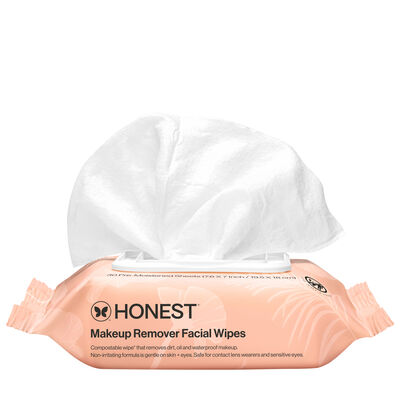Let’s face it, pores get clogged more than we’d like them to. Even with all of the skin protectants available, dirt, oil, and grime still make their way into our pores and stay until we usher them out. However, clogged pores don’t appear on the skin's outer layer the same way for everyone. Some people get them sprinkled along the bridge of their nose. Others battle clogged pores in multiple areas around the face. Fortunately, for every clogged pore, there is an exfoliation treatment that will slough away dull skin and leave behind the good.
So, what is natural exfoliation? Put simply, it’s a skincare process that removes dead skin cells so that new ones can emerge. Although the skin has a natural way of replenishing its top layers, this typically only occurs every 30 days. And, not all dead skin cells shed completely every time, which results in impurities that are left behind, in addition to dry, flaky areas. Exfoliation lifts away anything that remains to reveal fresher, brighter, and smoother skin.
If you’re concerned about clogged pores or feel like the texture of your skin can use improvement, then clean beauty exfoliating products could be good for you. You don’t have to wait until blemishes start to form before taking action. Use gentle exfoliating measures as a preventative skincare technique to keep your outer layer pores in good shape.
Benefits of Exfoliating
Once you know about the benefits of exfoliating, you can decide how often you want to incorporate it into your skincare routine. In addition to improving the surface of the skin and promoting new skin cell growth, gentle exfoliating also helps to:
- Even out the skin tone. When areas of the face are dry, flaky, or clogged, exfoliating subtly changes the color of the skin. After dead skin cells are removed, discoloration and irritation is less noticeable.
- Smooth the skin. Clogged pores often lead to blackheads or whiteheads, which can cause the skin to be bumpy and open to infection. Exfoliation effectively unclogs enlarged pores for a smoother texture.
- Minimizes the appearance of pores. As pores are clogged, they stretch and appear larger. When you exfoliate your face, it helps to shrink the enlarged pores back to their normal size. In addition to exfoliation, a face primer also works well to minimize pores. It serves as a thin barrier to keep makeup from sinking too far down into the pores.
- Boost blood flow. The exfoliating motion brings circulation to the surface of the skin in order to achieve a more radiant glow.
Exfoliation gives the skin a boost when it’s dull or has an excess of oil buildup. It’s a technique that creates a clean slate by promoting healthy skin cell renewal and producing collagen to improve the skin’s texture and appearance.
Exfoliation Methods: Mechanical and Chemical
There are two main methods of exfoliation. The first is “mechanical exfoliation.” This refers to the action itself. You can exfoliate the skin without using any exfoliating scrubs at all. All you need is a wet washcloth to move across the face in a circular motion to wash away dead skin cells. There are also special dry brushes, exfoliating mitts, and deep-clean scrubs intended specifically to attack dull skin.
However, it’s more soothing and nourishing to the skin to apply an exfoliant that has natural components that will soften the skin at the same time. With mechanical exfoliation, wet the face and apply an exfoliant in small, circular motions. You can use a tool or clean fingertips, but be careful not to scrub too hard as this can lead to irritation or even small tears in the skin. Rinse the face thoroughly with lukewarm water. Then, follow up with a face cream or serum to lock in moisture that is sure to result in radiant skin.
It’s also easy to make your own at-home facial scrub using ingredients that you likely already have on your shelves. Start with a base of brown sugar and honey and stir together. The sugar granules work as a natural exfoliant and the honey helps to soften the skin. Add other popular DIY scrub ingredients, such as oatmeal, blueberries, lemon, or even a dash of coconut oil.
“Chemical exfoliation” refers to using facial scrubs or masks that contain active ingredients like alpha hydroxy acids, such as glycolic acid or citric acid. These help to smooth away the imperfections of the skin. This type of exfoliation supports a more even skin tone and is a recommended method for those interested in learning more about how to clean pores.
Whether you decide to primarily use mechanical exfoliation, chemical exfoliation, or a combination of the two, there are a few tips to make sure you experience the most benefits from either process.
- Choose an exfoliant with ingredients that work best on your skin type. A milder formula is best on sensitive skin or acne-prone skin, whereas a more intense exfoliant works better on oily skin types.
- When using any new skincare product, test a small area of the face first, especially if you have sensitive skin. See how your skin reacts before continuing. What works for one person may not be suitable for someone else.
- Use gentle, circular motions rather than scrubbing the face to prevent aggravating the skin and causing redness. Never use your fingers to dig or scratch at your pores. It may take several days or weeks of exfoliation to see the results you want, but proper exfoliation will leave your face unscarred.
- Steer clear of products that use artificial fragrances or dyes that may irritate the skin or cause a skin allergy. Use products with as many organic ingredients as possible to witness the benefits.
- Exfoliate after you’ve already removed any makeup (hello, Makeup Remover Wipes,) and have a clean face. Although some facial cleansers contain exfoliating properties, it never hurts to “double clean.”
- Consult your dermatologist if you have cystic or chronic acne. Exfoliation may not be the best route until the skin has calmed down and is less inflamed.
Exfoliating for Different Skin Types
There are three main skin types: dry, oily, and combination. Depending on your skin type, it may not be necessary to exfoliate on a daily basis. For example, what does exfoliating do for oily skin versus dry skin? If you have oily skin, you may be susceptible to clogged pores more often. Daily exfoliation works best. For dry skin types, exfoliation once or twice a week works well. And for combination skin, two to three times per week is a general recommendation. This is a basic guideline to follow when determining what’s right for your skin’s health.
You may also alter how often your exfoliate your skin as the seasons change. During the summer months, it’s typical to exfoliate more often since there’s an increase in sweat buildup. Additionally, if you are constantly in the gym, working outside, or part of any environment that causes buildup on your face to happen more quickly and frequently, these may all call for regular exfoliation. Consider all factors when determining what type of regimen is best for your skin type.
Start out exfoliating a few times a week and note the status of your skin. Exfoliating too little leaves behind clogged pores and excess oil. On the other hand, if performed too often, exfoliation may strip away healthy skin cells and natural oils, leaving the skin vulnerable. If your face is irritated, tender, or has excessive dryness, you may be exfoliating too much for your skin type.
How to Incorporate Exfoliation Into Your Skincare Routine
Once you know how to exfoliate your face based on your skin type, it’s easy to begin incorporating it into your regular routine. Some facial cleansers double as exfoliants, which offers you two steps in one. Typically speaking, though, it’s best to use exfoliator after you’ve cleaned your face.
Exfoliation preps your skin to fully absorb any moisturizers or serums you use as part of your skincare routine. Look for soothing ingredients like shea butter and plant-based oils to hydrate the skin and keep supple and fresh. Even if you don’t exfoliate daily, treat it like a pampering experience and give your skin extra love by using a detox mask once a week.
Our 3-in-1 Detox Mud Mask has a creamy base made with activated charcoal to remove the skin’s impurities while you relax. Apply the mask evenly on the face and allow it to work for 10 to 15 minutes before rinsing with warm water. In addition to unclogging pores, it also has conditioning ingredients like manuka honey and shea butter to leave the skin feeling oh-so smooth.
Does Your Skin Need Exfoliation?
Exfoliating can be a part of your morning or nighttime skincare routine. In the morning, it helps prep the face for makeup when you want to achieve a healthier complexion. At night, it works to remove all the dirt and makeup from the day before you go to sleep. Do whatever works best for your skin and schedule.
Adding an exfoliation step to your skincare routine takes mere minutes but the results are long-lasting. Whether you opt for once a day or once a week, day or night, the benefits of exfoliating equal fewer clogged pores and a brighter complexion. It’s a beauty technique that’s easy and convenient to perform and feels good on the face once you’re done.
Source: https://www.aad.org/skin-care-secrets/safely-exfoliate-at-home
We aim to provide you with the most honest and credible information possible. This article was reviewed for accuracy by The Honest Team and its internal technical experts.
blog_review_statement




